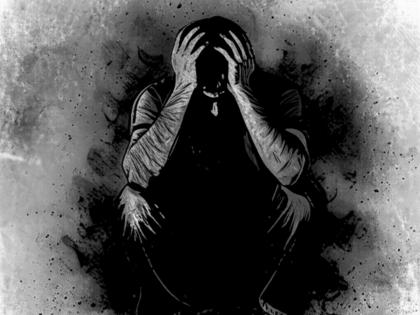A Silent Struggle - Understanding Mental Health Crisis Among India's Youth
By Hemant Jain | Updated: June 9, 2025 13:15 IST2025-06-09T13:12:48+5:302025-06-09T13:15:50+5:30
Mental health is becoming a silent killer-not through noise, but M through stillness, isolation, stigma, and invisible pain. Young ...

A Silent Struggle - Understanding Mental Health Crisis Among India's Youth
Mental health is becoming a silent killer-not through noise, but M through stillness, isolation, stigma, and invisible pain. Young people today face an unprecedented crisis, burdened by immense pressures that often go unseen. Emotional struggles are not always loud-sometimes, they hide behind bright smiles and cheerful hellos. This is not just an individual battle but a collective wake-up call. Let's talk more. Let's listen deeper. Let's stand by those who may be silently suffering-friends, classmates, colleagues, or children. Because behind even the happiest faces may lie the heaviest burdens.
Time to act: What can we do?
Schools must integrate mental health education and provide access to trained counselors.
Parents and families must foster environments where emotional expression is encouraged-not punished.
Workplaces and colleges should actively support the mental well-being of young employees and students through safe spaces and resources.
Media and influencers should work to normalise mental health conversations and break sterotypes
Government and healthcare systems must scale up access to adolescent mental health services across all regions-especially rural and underserved areas.
Youth mental health crisis:
Young people today face immense, invisible pressures fueling a mental health crisis.Let this be a wake-up call: talk more, listen deeper, and support those silently suffering. Even behind bright smiles, heavy burdens may be carried.
The hidden mental health crisis among India's youth:
India has 350 million youth, many struggling silently with mental disorders. Studies show 7-14% of children face diagnosable conditions, rising in urban areas. By young adulthood, 9.5% report lifetime mental illness-this is a national emergency.
What are India's youth struggling with?
Depression affects up to 40% of students in urban schools, often paired with anxiety. ADHD, conduct disorders, and neurodevelopmental issues are widespread, especially in boys. Substance use and eating disorders are rising but remain largely undetected and untreated.
Gender and regional patterns:
Mental health rates are similar between genders, but disorder types vary.
Girls show more emotional disorders in late teens; boys show more behavioral issues early on. Urban youth suffer more than rural, with certain states showing higher disorder prevalence.
Suicide - The most alarming signal:
Suicide is rising and is now a leading cause of death among Indian youth. 15-29-year-olds are especially vulnerable due to untreated mental illness and lack of support. This reflects not only deep suffering but also a critical gap in care and awareness.
Why is this happening?
Academic pressure: India's education system is often high-stakes and exam-oriented. Board exams, entrance tests, and career expectations can overwhelm students, causing anxiety, burnout, and self-doubt.
Digital overload: Excessive screen time, particularly post-COVID, has been linked to increased depression and anxiety. Social media platforms can create unrealistic standards and expose youth to cyber bulling.
Family environment: Emotional neglect, domestic conflict, or lack of parental connection can deeply affect a child's mental well-being. Adolescents raised in unsupportive households are more likely to experience mental distress.
Peer pressure and bullying: Bullying whether in schools, colleges, or online-is a common cause of self-esteem issues and even suicidal thoughts among Indian teens. Discrimination based on gender, caste, or appearance adds further stress.